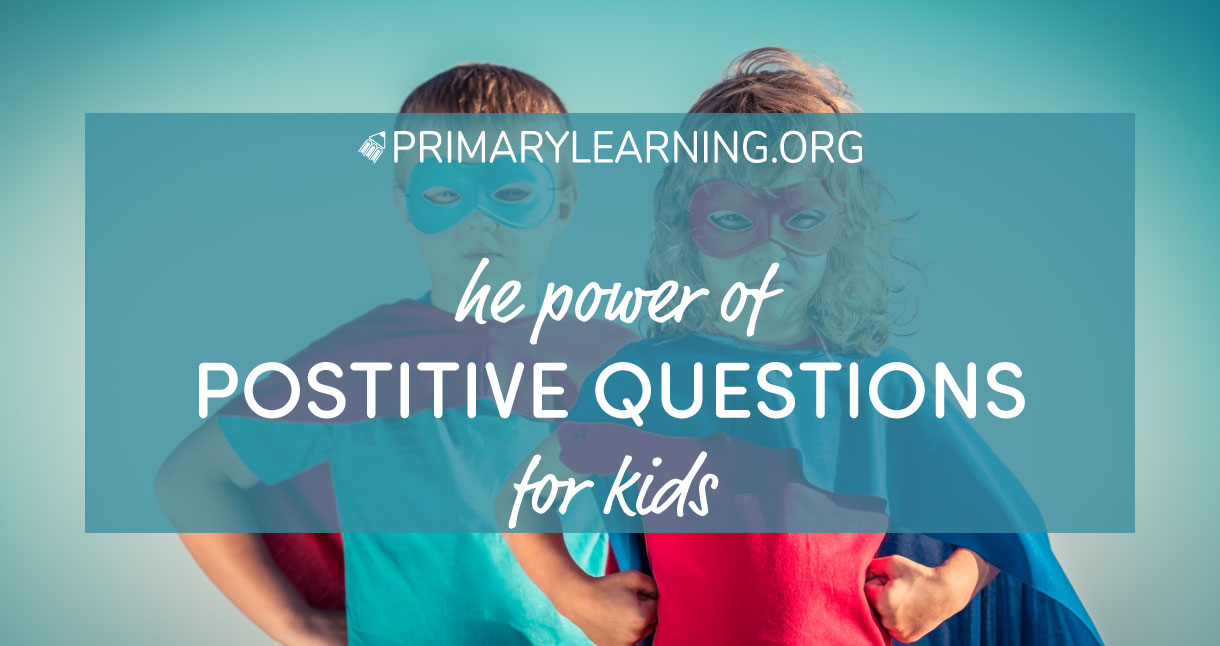

Posted by: Alesia Netuk
Updated: September 28th, 2023
The Power Of Positive Questions For Kids
The Power Of Positive Questions For Kids
People often think that it is pointless to ask young children questions because they believe they are too young to understand. This is especially true when it comes to children that are only old enough to attend kindergarten.
However, more individuals are beginning to stand up and take notice concerning the impact of education in the classroom when it is accompanied by asking positive questions instead of telling children what they should do, say, or believe.
In fact, the changes are so enormous that they could have a positive ripple effect on teaching and learning for years to come. It simply requires a teacher that is willing to do it. In essence, learning to ask positive questions instead of telling children what to do helps children bridge that connection between thinking and doing, not to mention sparking their imaginations and helping them come up with creative solutions to problems on their own. Rest assured, this is just the tip of the iceberg. The benefits of asking positive questions for kids certainly do not end there.
The Connection Between Thinking and Doing
Many adults make the connection between thinking and doing for granted. For the most part, they think about something that needs to be done, and then they take action. However, for a small child, this connection has not yet been developed. In most cases, children do not really understand the two concepts unless they experience them for themselves.
A child that is allowed to think through a problem and then sees how the problem can be remedied because of their actions is a child that is empowered. The flip side of the coin is to limit a child by not allowing them to do anything except what they are told to do. This takes away their ability to figure out problems for themselves, making them much more dependent on adults, especially authority figures.
Instead of learning how to think about a problem and work through it independently, they start to rely on doing nothing until someone tells them exactly what to do. Sadly, this is a problem that can last well into adulthood.
Getting Kids to Think
One of the best ways to get kids to think about effective solutions to common problems is to ask positive questions. In fact, this serves as an effective means of getting kids to think about practically anything. It is so important that it helps them understand that effective solutions can be developed without causing harm to themselves or anyone else. It also teaches kids to be positive in their comments, actions, and words as they work through problems, either on their own or with others.
Lead toward learning by asking questions that drive to positive thoughts. Instead of asking “What did you do….” ask “What did you enjoy about…”. Lead your children to think positively. Having positive memories and positive actions will encourage positive behavior.
Examples of positive questions
Instead of asking, “What did you do at school today?” ask, “What did you enjoy in school today?”.
Instead of asking, “What did you do on Holidays?” ask, “What did you enjoy about your Holidays?”.
Engage the intellect. Have your children practice asking questions that turn into positive memories. Let your students ask each other questions at the end of the class: “What did you like at this lesson?”.
Stop asking “why?”. It always leads to the answer “Because…” and only provides answers to justify the past. Rather start asking “How?”. Instead of asking, “Why do you run in the classroom?”, ask, “How can I get you to walk in the classroom?”.
Two Types of Teachers
Essentially, there are two types of teachers. One group tends to tell kids what to do and when to do it, while the other group prefers to ask positive, open-ended questions to facilitate learning and personal growth.
Obviously, kids have the opportunity to learn better when they are working with teachers that allow them to figure out things on their own as opposed to trying to drill something into them by repeatedly telling them what to do.
Therefore, it is vitally important that teachers fully realize how crucial it is to teach by guiding children to the right answer instead of just stating obvious facts.
Benefits of Asking Positive Questions
There are many benefits to asking positive questions, not the least of which involves helping kids learn on their own.
Obviously, it is easier to learn in an environment that has been carefully developed just for that purpose. While it is the students’ job to learn the material presented to them, it is in every way the job of the teachers to make that experience as positive and rewarding as possible. It is only by doing so that children will truly be able to reach their full potential as they grow.
LEARNING MATERIALS TO MEET EVERY CHILD’S NEEDS
Here, at PrimaryLearning.Org, we tend to deliver the best-differentiated learning materials to K-2 students. Our resources can be easily incorporated into multisensory lessons to meet every child’s needs, whether s/he is a visual, kinesthetic, or auditory learner.